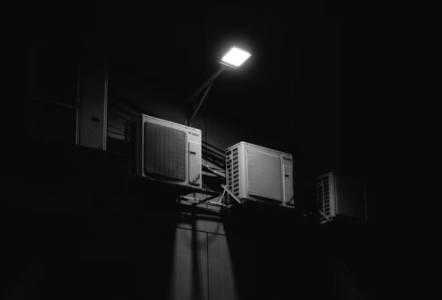Use it, then return it? The surprising trend retailers are seeing
- Replies 0
People return things for all kinds of reasons—ranging from simple buyer’s remorse to calculated attempts that blur the line between everyday consumer behavior and outright exploitation—some grounded in truth, while others test the boundaries of credibility with surprising nerve.
There's a fine line between a genuinely defective product that fails to meet expectations and an item intentionally purchased with the full intent of using it once before slyly sending it back under the guise of dissatisfaction.
Across the country, shoppers are creatively—and sometimes shamelessly—stretching return policies in ways that challenge not only logic but also the very framework those policies were designed to uphold.
And for big-box retailers like Costco and Home Depot, whose reputations have long been tied to flexible return policies, signs are emerging that this era of leniency may be quietly winding down.
Seasonal returns are the biggest red flag, and store employees say they see the same story play out every year like clockwork.
Portable ACs get rushed back right after the last heatwave, and TVs mysteriously stop "working" the day after the Super Bowl.
At Costco, Halloween animatronics, holiday lights, inflatable reindeer, and even leftover party platters all make a return trip when the event is over. The policy says “risk-free,” but employees call it the “service desk rental program” for a reason.
Some shoppers admit they return goods simply because they don't want to store them, whether it’s a 10-foot witch or a 50-foot string of lights.

One Costco staffer said they processed a return on $500 worth of wedding snacks—unopened, but clearly meant to be free catering. Others recall customers returning three $2,000 necklaces over a single summer or a fully assembled gingerbread house because it “looked bad.” These aren’t outliers—they’re part of a growing pattern retailers now expect and quietly resent.
Returns are now so predictable that workers can forecast them like seasons: snowblowers in March, leaf blowers in May, pool floats in September.
At Home Depot, employees say ladders come back just after Christmas light season, and chainsaws flood in after hurricane threats subside.
Customers are known to buy pressure washers for a single Saturday project, then drop them off the next day—some even swapped out old mowers for new ones and returned the box. As one vendor put it, “It’s not the norm. But it’s not the exception either.”
Retailers once used generous return policies to earn customer loyalty, but those days are fading fast. Home Depot recently cut its return window to 7 days for air conditioners, generators, and pressure washers—and store workers say it’s already deterred some one-time users.
The shift is partly logistics, partly survival: return abuse is estimated to cost retailers nearly $890 billion this year alone. And it’s not just stores eating the cost—vendors are often contractually obligated to accept 100% of returns, no matter how absurd.
The scale of the issue is staggering, with nearly 17% of total retail sales expected to be returned in 2024, according to industry reports. Some items can’t be resold and go straight to landfills or liquidation bins, while others get sent back at the vendor’s expense.
One vendor said he watched used mowers come back that weren’t even from their company—customers simply boxed up their old one.
The rise of e-commerce has only fueled the fire, conditioning shoppers to expect hassle-free returns even when their motives aren’t entirely honest.
The “customer is always right” mentality has now evolved into “the customer always returns.” In the past, that worked to build brand loyalty, but today it’s being exploited by people who plan their purchases like weekend rentals.
Experts call it “wardrobing” or “retail borrowing,” but it amounts to gaming the system, whether it’s a fondue pot or a flag. Even American flags come back after July 4—used, sun-faded, and refunded without question.
Read next:

So where do retailers draw the line between good service and being taken advantage of? Is cracking down on return abuse long overdue, or does it risk punishing the honest shopper with a broken item and a receipt? Tell us in the comments what you think—have you seen this in action, or maybe even done it yourself?
There's a fine line between a genuinely defective product that fails to meet expectations and an item intentionally purchased with the full intent of using it once before slyly sending it back under the guise of dissatisfaction.
Across the country, shoppers are creatively—and sometimes shamelessly—stretching return policies in ways that challenge not only logic but also the very framework those policies were designed to uphold.
And for big-box retailers like Costco and Home Depot, whose reputations have long been tied to flexible return policies, signs are emerging that this era of leniency may be quietly winding down.
Seasonal returns are the biggest red flag, and store employees say they see the same story play out every year like clockwork.
Portable ACs get rushed back right after the last heatwave, and TVs mysteriously stop "working" the day after the Super Bowl.
At Costco, Halloween animatronics, holiday lights, inflatable reindeer, and even leftover party platters all make a return trip when the event is over. The policy says “risk-free,” but employees call it the “service desk rental program” for a reason.
Some shoppers admit they return goods simply because they don't want to store them, whether it’s a 10-foot witch or a 50-foot string of lights.

Use it, then return it? The surprising trend retailers are seeing. Image source: Joshua Fernandez / Unsplash
One Costco staffer said they processed a return on $500 worth of wedding snacks—unopened, but clearly meant to be free catering. Others recall customers returning three $2,000 necklaces over a single summer or a fully assembled gingerbread house because it “looked bad.” These aren’t outliers—they’re part of a growing pattern retailers now expect and quietly resent.
Returns are now so predictable that workers can forecast them like seasons: snowblowers in March, leaf blowers in May, pool floats in September.
At Home Depot, employees say ladders come back just after Christmas light season, and chainsaws flood in after hurricane threats subside.
Customers are known to buy pressure washers for a single Saturday project, then drop them off the next day—some even swapped out old mowers for new ones and returned the box. As one vendor put it, “It’s not the norm. But it’s not the exception either.”
Retailers once used generous return policies to earn customer loyalty, but those days are fading fast. Home Depot recently cut its return window to 7 days for air conditioners, generators, and pressure washers—and store workers say it’s already deterred some one-time users.
The shift is partly logistics, partly survival: return abuse is estimated to cost retailers nearly $890 billion this year alone. And it’s not just stores eating the cost—vendors are often contractually obligated to accept 100% of returns, no matter how absurd.
The scale of the issue is staggering, with nearly 17% of total retail sales expected to be returned in 2024, according to industry reports. Some items can’t be resold and go straight to landfills or liquidation bins, while others get sent back at the vendor’s expense.
One vendor said he watched used mowers come back that weren’t even from their company—customers simply boxed up their old one.
The rise of e-commerce has only fueled the fire, conditioning shoppers to expect hassle-free returns even when their motives aren’t entirely honest.
The “customer is always right” mentality has now evolved into “the customer always returns.” In the past, that worked to build brand loyalty, but today it’s being exploited by people who plan their purchases like weekend rentals.
Experts call it “wardrobing” or “retail borrowing,” but it amounts to gaming the system, whether it’s a fondue pot or a flag. Even American flags come back after July 4—used, sun-faded, and refunded without question.
Read next:
- You might be surprised by how these 3 retailers handle appliance returns
- Walmart’s “headache-free” return policy is vanishing–here’s why!
Key Takeaways
- Retailers like Costco and Home Depot have long offered generous return policies, but increasingly see abuse from shoppers treating them like rental services.
- Common returns include air conditioners after a heatwave, televisions after major sports events, and holiday decorations once the season ends.
- Some stores are tightening policies, like Home Depot’s new 7-day window for high-demand seasonal goods, in response to soaring return fraud and operational losses.
- The retail industry is projected to lose nearly $890 billion to returns in 2024, prompting a quiet but growing shift toward stricter enforcement and return fees.






